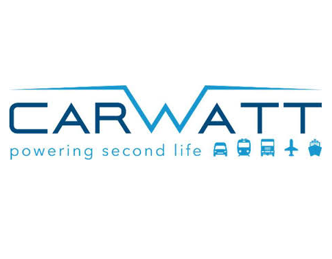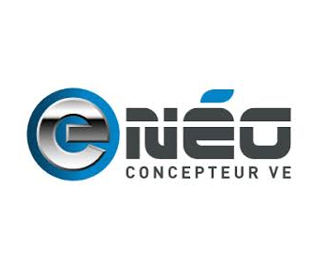123Fab #28
1 topic, 2 key figures, 3 startups to draw inspiration from

In April 2020, the French government finally authorized retrofitting, i.e. the conversion of a vehicle’s engine to reduce its emissions. Although retrofitting wasn’t illegal beforehand, it was necessary to obtain authorization from the car manufacturer for the retrofitted vehicle to be homologated. Today, any certified professional can convert a vehicle, as long as it is a passenger or freight transport vehicle more than 5 years old (cars, trucks, buses, light and heavy commercial vehicles, etc.) or a 2- or 3-wheeled vehicle more than 3 years old. While France is now the 13th European country to have legalized this practice for B2B and B2C players, it is also the first country to have authorized the retrofit of hydrogen engines. In this newsletter, we will focus on B2B retrofitting for cars and light commercial vehicles (LCV).
Two retrofit technologies coexist:
- Exhaust after-treatment systems (for diesel engines) – this process involves modifying only the diesel emission system of the engine. Hardware may include diesel particulate filters (DPFs), diesel oxidation catalysts (DOCs), selective catalytic reduction (SCR), crankcase emission control devices, or other technologies to reduce emissions.
- Re-power systems – this involves stripping out the existing engine and replacing it with a brand-new powertrain (e.g. a 100% electric powertrain, a cleaner diesel engine, a petrol engine + LPG system, or a hybrid electric powertrain). Hydrogen retrofitting involves removing the combustion engine and replacing it with a battery backed up by a hydrogen fuel cell. Although the technologies are very recent and many companies are still in the prototyping phase, the main reasons for the enthusiasm for hydrogen retrofit are the following:
- Battery recharging is faster: it takes about 5 minutes in a hydrogen charging station. However, the infrastructure is not yet well developed. In Europe, there are 170K electric charging stations compared to 87 hydrogen stations.
- Hydrogen batteries occupy smaller volumes compared to electric cars (but are heavier)
Since retrofitting presents an interesting opportunity for decarbonization, corporates are increasingly addressing this market. For instance, Air Liquid, Green GT and TC Transports are currently working on a project called ‘Cathyopé’ to retrofit 44-ton diesel trucks for commercial logistics. Corporate-startups are also flourishing. Last summer, Air France announced that it was joining forces with French startup Carwatt to switch to electric ramp equipment. Baggage trolleys, runway trucks, stepladders, aircraft pushers, etc. are being converted to electric engines and equipped with second-life batteries. Another example is the German startup Keyou, founded by former BMW engineers in 2015, which has redesigned the traditional internal combustion engine enabling it to run on hydrogen.
Beyond being an interesting decarbonization option, retrofitting has other advantages for manufacturers and end customers.
- Retrofitted vehicles are more affordable than new electric and hydrogen cars – for a fraction of the price of a new electric car (the cheapest $22,000), French start-up Transition One retrofits the most popular car models. For $5,600 (or $9,000 without a government subsidy), it builds a more efficient electric engine, batteries and a connected dashboard into the car.
- Retrofitted cars are eligible for subsidies – in France, for B2B retrofitting, companies can receive a subsidy of €4,000 for a commercial vehicle weighing less than 2.5 tons and €6,000 in other cases.
- Retrofitting contributes to a dual circular approach – on the one hand, it extends the life of existing thermic vehicles. On the other hand, old batteries are recycled and have a second life. The flagship example is the Renault Zoé, whose electric engine is reused in LCV or motorboats on the Seine, after 5 or 6 years of use when its capacity is only slightly degraded (70%-80% of its initial capacity).
However, a number of challenges also hinder the massive implementation of retrofitting. First of all, there are economic reasons for its slow adoption. The process is costly, especially if the car’s lifespan is limited by other components. Then, there are technical reasons. Retrofitted cars have a reduced driving range (120 to 200 km maximum) and must pass rigorous safety tests to be roadworthy. For hydrogen retrofitting, access to hydrogen is difficult; the number of charging stations is very limited. Finally, there is some hesitation about the environmental issues surrounding retrofitting – some wonder about the sustainability of EVs and therefore retrofitting. For others, it should be seen as a step in the transition to electric cars that only makes sense in certain circumstances.
To conclude, if retrofitting is a valid option for many companies at the moment, the future of the market will depend on its long-term affordability compared to other options. This is because the cars used are often end-of-life vehicles that can be more expensive to maintain. At the same time, the question of retrofitting electric vehicles is also beginning to be raised by car manufacturers.
2 Key Figures
24 vehicle retrofit startups
registered by Crunchbase
Market size expected to reach 420k vehicles by 2025
According to a study carried out by Aster Fab, the number of retrofitted vehicles in the EU is expected to reach 420,000 vehicles by 2025.
3 startups to draw inspiration from
This week, we identified three startups that we can draw inspiration from: Carwatt, Phoenix mobility and E-Néo.

Carwatt
Carwatt converts industrial and transport vehicles from combustion to electric. It works on airport support equipment, industrial vehicles, waterways, safari cars.

Phoenix Mobility
Phoenix Mobility designs retrofit kits to convert fuel-powered vehicles into electric ones. This is a cheaper and greener alternative to buying a new vehicle. It is one of the pioneers in retrofitting in France.

e-Néo
e-Néo works exclusively for B2B clients (garages, transporters, companies, local authorities, etc.) on the transformation of the vehicle’s powertrain (retrofit) from thermal to electric or hydrogen.
